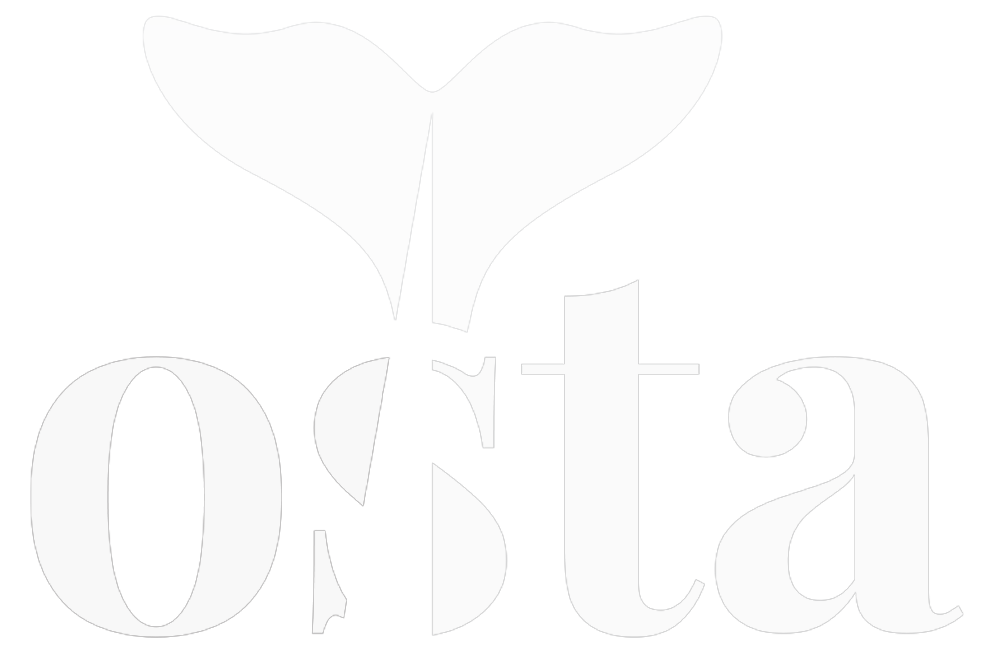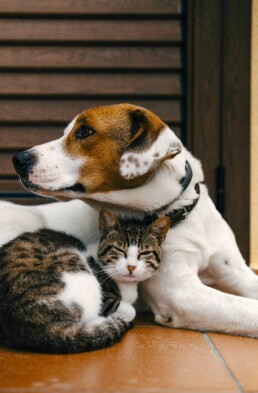Dierlijke uitdagingen overwinnen
Winstgedreven praktijken bij grootschalige honden- en kattenkwekers
In Vlaanderen en in het buitenland worden grootschalige honden- en kattenkwekers en -importeurs vaak gedreven door financieel gewin, ten koste van dierenwelzijn. Dit leidt tot verschillende problemen:
- Overbevolking en verwaarlozing: inrichtingen kunnen wettelijk honderden volwassen honden huisvesten en duizenden puppy’s per jaar kweken, maar met beperkt personeel krijgen deze dieren onvoldoende zorg en aandacht.
- Gezondheids- en gedragsproblemen: door gebrek aan adequate verzorging ontstaan vaak ziektes en gedragsstoornissen bij de dieren.
- Ondermaatse huisvesting: importeurs houden dieren vaak in ondermaatse omstandigheden in het buitenland, die niet voldoen aan de Vlaamse welzijnsnormen.
Deze onethische praktijken hebben gevolgen:
- Overbelasting van asielen: er is een toestroom van zieke en slecht gesocialiseerde dieren in asielen
- Gevolgen voor eigenaren: nietsvermoedende kopers worden geconfronteerd met onverwachte financiële en emotionele lasten
1. De schaduwzijde van grootschalige honden en kattenkweek
In Vlaanderen staat de grootschalige kweel van honden en katten onder toenemende druk, vanwege de prioriteit die vaak aan financieel gewin wordt gegeven boven dierenwelzijn. Deze invalshoek leidt tot aanzienlijke problemen bij de kweek van puppy’s en kittens.
Grootschalige kwekerijen in Vlaanderen mogen wettelijk tot 500 volwassen honden huisvesten, waarvan minstens 400 vrouwelijke dieren. Met een gemiddelde productie van 1,5 nest per jaar resulteert dit in ongeveer 3.600 puppy’s jaarlijks. Deze hoge productie draagt bij aan de overbelasting van asielen en creëert problemen voor onvoorbereide eigenaren.[1]
De gevolgen van deze praktijken reiken ver. Puppy’s en kittens, gekweekt onder suboptimale omstandigheden, worden snel verkocht vanuit schone kennels, wat een misleidend beeld schept van hun opvoeding. De werkelijke omstandigheden komen vaak pas aan het licht wanneer ziektes, veroorzaakt door onvoldoende vaccinaties en slechte hygiëne, zich openbaren na de verkoop. Bovendien zijn deze dieren door hun gehaaste opvoeding vaak slecht gesocialiseerd, wat leidt tot moeilijk te corrigeren gedragsproblemen. Veel eigenaren zien zich hierdoor genoodzaakt hun huisdier naar een asiel te brengen, waardoor de last van rehabilitatie op anderen valt, terwijl de kwekers hun winst behouden. Deze cyclus resulteert in een constante toestroom van zieke en slecht gesocialiseerde dieren in asielen, een algemene afname van dierenwelzijn, en laat asielen en onwetende eigenaren achter met de negatieve gevolgen.
2. Ethische uitdagingen en risico’s van geïmporteerde huisdieren
Ongeveer een derde van de puppy’s in Vlaanderen is afkomstig Oost-Europa (voornamelijk Tsjechië, Hongarije, Roemenië en Slowakije), Rusland en Wit-Rusland. De kweekomstandigheden in deze regio’s voldoen vaak niet aan de Vlaamse welzijnsnormen. [2] Hoewel de Vlaamse overheid een ‘whitelist’-systeem heeft ingevoerd om het welzijn van geïmporteerde dieren te waarborgen, is er weinig vertrouwen in de effectiviteit ervan. Het systeem wordt beschouwd als een oppervlakkige lijst van buitenlandse verzamelcentra die verondersteld worden onder overheidstoezicht te staan. De wijdverspreide twijfel over de kwaliteit en effectiviteit van dit toezicht leidt tot oproepen om het systeem af te schaffen. [3]
Na de geboorte worden de puppy’s en kittens naar verzamelcentra gebracht en in kleine kooien geplaatst voor transport. Ze maken lange, stressvolle reizen naar Vlaanderen. Bij aankomst worden ze snel verkocht vanuit schone kennels, waardoor kopers misleid worden over hun herkomst en opvoeding. De gevolgen van verwaarloosde zorg door kwekers worden duidelijk wanneer ziektes en gedragsproblemen [4], veroorzaakt door onvoldoende vaccinaties [5] en onhygiënische omstandigheden, na aankoop aan het licht komen.
Bovendien zijn deze jonge dieren vaak onvoldoende gesocialiseerd, wat resulteert in moeilijk te corrigeren gedragsproblemen. Hierdoor geven veel eigenaren [6] deze dieren af aan asielen, waardoor de last van rehabilitatie op anderen wordt afgewenteld, terwijl de kwekers met de winst weglopen. [7]
Dieren die buiten Vlaanderen worden gekweekt, voldoen vaak niet aan de Vlaamse welzijnsnormen. [8] Buitenlandse kwekers negeren regelmatig cruciale dierenwelzijnsfactoren. De Vlaamse regels betreffende de minimale scheidingsleeftijd van de moeder, jaarlijkse nestlimieten voor moederdieren, en specifieke eisen aan voldoende personeel en buitentoegang zijn niet van toepassing op deze buitenlandse inrichtingen.
Deze situatie toont aan dat grootschalige honden- en kattenkwekers winst boven dierenwelzijn stellen. Dit resulteert in een toename van zieke en slecht gesocialiseerde dieren in asielen, een algemene afname van dierenwelzijn, en nietsvermoedende eigenaren die achterblijven met de financiële en emotionele gevolgen.
3. Invoer van buitenlandse rescue dieren: uitdagingen en beleidsvorming
De import van buitenlandse rescue honden en katten brengt diverse uitdagingen met zich mee. Een van de belangrijkste obstakels is het gebrek aan een wettelijk kader, wat de effectieve regulering en handhaving van standaarden bemoeilijkt. Daarnaast vormt de variërende professionaliteit bij reddingsorganisaties een probleem. Hoewel deze organisaties dieren willen helpen, ontbreken soms grondige screeningprocessen, wat kan leiden tot de import van dieren met gedragsproblemen of ziektes. Daarnaast bestaan er ook kwaadwillende partijen die voornamelijk uit zijn op winst, wat kan resulteren in misbruik van het systeem.[9]
Sommige dierenbeschermingsorganisaties staan kritisch tegenover de import van buitenlandse huisdieren. Zij menen dat dit slechts een verschuiving van het probleem is en pleiten voor lokale adoptie als een meer kosteneffectieve oplossing.[10]
Ondanks deze uitdagingen zijn er ook positieve ontwikkelingen. De Vlaamse Codex Dierenwelzijn biedt een kader voor verbetering. Deze geeft de Vlaamse Regering de bevoegdheid om welzijnsnormen op te stellen voor de invoer van adoptiedieren. Deze normen omvatten uitgebreide richtlijnen voor verschillende aspecten van het adoptieproces, waaronder registratie, diergegevens, informatie over de adoptant, transport en het adoptieproces zelf.[11]
Ethisch verantwoorde huisdierpraktijken
Om ethische praktijken in huisdieradoptie en kwekerijen te bevorderen, stellen we de volgende acht strategieën voor:
- Bevorder adoptie: promoot platforms voor asieldieradoptie om het aantal dieren in asielen te verminderen en adoptie te stimuleren boven aankoop.
- Reguleer kwekers: beperk de handel in honden en katten tot gecertificeerde kwekers die voldoen aan strikte richtlijnen voor verantwoorde kweek- en verkoopomstandigheden.
- Voorkom overkweek: sta kwekers alleen toe te kweken als er voldoende vraag is naar dieren, zodat elke puppy en kitten een thuis vindt.
- Beperk kweekfaciliteiten: stel een maximumaantal dieren vast voor kweekfaciliteiten om de kwaliteit en het welzijn van dieren te waarborgen.
- Overweeg thuiskweek: stimuleer gecontroleerde voortplanting in thuisomgevingen om sociale banden te versterken en de afhankelijkheid van commerciële kwekers te verminderen. Reguleer deze praktijk om verantwoorde plaatsing van nakomelingen te garanderen.
- Bescherm dierengezondheid: verbied het kweken, houden en verhandelen van rassen met erfelijke aandoeningen en extreme kenmerken om de genetische gezondheid van dieren te verbeteren.
- Beperk import: implementeer wetgeving die de import van pups en kittens van buitenlandse kwekers verbiedt om dierenleed tijdens transport te verminderen en de lokale asielpopulatie te beheersen.
- Reguleer reddingsorganisaties: stel specifieke regels en een wettelijk kader op voor buitenlandse reddingsorganisaties en de import van geredde dieren om te zorgen dat alleen professionele en legitieme organisaties kunnen opereren.
Potentiële impact: een optimale realiteit voor honden en katten
499 dieren
266 honden
233 katten
__
In Vlaanderen worden dagelijks gemiddeld 499 dieren blootgesteld aan de gevolgen van handel, waarvan 266 honden en 233 katten. In 2022 registreerde Cat en Dog ID in Vlaanderen 97.000 honden en 85.000 katten. Daarnaast worden jaarlijks naar schatting 30.000 honden en 2.000 katten geïmporteerd. Deze cijfers tonen aan dat een aanzienlijk aantal huisdieren worden blootgesteld aan de risico’s van handel en transport, waarbij grootschalige kwekers van honden en katten vaak verantwoordelijk zijn voor deze transacties.[15]
[1] Philip Zurinckx, hoofd van de non-profitorganisatie “Dierenvrienden Sint-Truiden”, nam deel aan een hoorzitting over dierenasielen en de import van straat- en asieldieren. Deze hoorzitting vond plaats op 18 oktober 2023 voor de Commissie voor Dierenwelzijn van het Vlaams Parlement.
[2] Op 4 mei 2022 besprak de Commissie voor Dierenwelzijn van het Vlaams Parlement de herkomstlanden van geïmporteerde honden. Dit gebeurde naar aanleiding van vragen aan de Vlaamse Minister van Dierenwelzijn Ben Weyts over de Hongaars-Vlaamse overeenkomst inzake hondenhandel. Het FAVV (Federaal Agentschap voor de Veiligheid van de Voedselketen) meldde dat in 2022 ook grote aantallen honden uit Rusland en Wit-Rusland kwamen. Een medewerker van het FAVV, DIRCO, DG Control bevestigde deze informatie via e-mail op 19 februari 2024.
[3] Trees Hendrickx, een gecertificeerd hondengedragstherapeut (Odisee-KU Leuven) en expert op het gebied van Belgische en buitenlandse dierenasielen, sprak eveneens tijdens de hoorzitting genoemd in referentie 1.
[4] Verwaarlozing en slechte hygiëne kunnen bij puppy’s en kittens diverse ziekten veroorzaken. Honden lopen risico op onder andere parvo, hondenziekte, luchtweginfecties, darmparasieten en kennelhoest. Katten zijn vatbaar voor kattenziekte, luchtweginfecties en kattenleukemie.
[5] Sommige puppy- en kittenkwekers, vooral bij import, geven ontoereikende of te vroege vaccinaties om jongere, aantrekkelijkere dieren te verkopen. Ze vervalsen soms de leeftijd in het paspoort om de ‘aaibaarheidsfactor’ te behouden. Dit komt deels door de timing van rabiësvaccinaties: de eerste kan pas op 12 weken, gevolgd door 21 dagen incubatie en 10 dagen quarantaine in België. Volgens de importwetgeving mogen pups of kittens pas op 15 weken worden geïmporteerd en op 16 weken en 3 dagen worden verkocht, maar deze regels worden vaak genegeerd. Vroege vaccinaties kunnen ineffectief zijn vanwege moederlijke antilichamen en het onrijpe immuunsysteem van jonge dieren.
[6] Een hoorzittingsverslag van 11 januari 2024 (2023-2024) van de Commissie voor Dierenwelzijn van het Vlaams Parlement, uitgebracht door Els Sterckx en Allessia Claes, onthult dat 68% van de honden in asielen door hun eigenaars werden afgestaan.
[7] In 2022 vonden 48.023 dieren hun weg naar Vlaamse asielen, waaronder 7.882 honden en 26.134 katten. Deze cijfers zijn afkomstig uit het antwoord op schriftelijke vraag nummer 258 van Allessia Claes, ingediend op 18 januari 2024 bij Ben Weyts, Minister van Dierenwelzijn in het Vlaams Parlement, betreffende dierenopvang, adoptie en euthanasie in asielen.
[8] Het Vlaamse Kennelbesluit van 2007 schrijft voor dat buitenlandse asielen moeten voldoen aan Bijlage III, die minimale vloeroppervlakten voor hokken en kooien voor jonge dieren specificeert. Andere eisen voor dierenverzorging zijn vaak vaag en moeilijk te controleren. Zelfs wanneer specifieke regels worden opgelegd aan buitenlandse asielen – zoals de bepaling dat “vrouwelijke honden niet meer dan twee keer per jaar bevallen” – zijn de normen in Vlaanderen strenger, met een maximum van drie geboortes per 24 maanden.
[9] Trees Hendrickx, de eerder genoemde hondengedragstherapeut en asielexpert, leverde ook een bijdrage aan de hoorzitting genoemd in referentie 1.
[10] Daniella van Gennep, Hoofd Dierenwelzijn en Public Affairs bij de Stichting DierenLot in Nederland, nam eveneens deel aan de hoorzitting genoemd in referentie 1.
[11] Deze informatie is ontleed aan Artikel 32 van de Vlaamse Codex Dierenwelzijn.
[12] De Belgische dierenbeschermingsorganisatie GAIA heeft criteria opgesteld om goede kwekers te onderscheiden van slechte kwekers (broodfokkers) . Deze criteria zijn beschikbaar op www.gaia.be/sites/default/files/2021-04/hoe_herken_je_een_slechte_kweker.pdf
Hieronder volgt een overzicht van deze criteria:
| Slechte kweker | Goede kweker |
|---|---|
| Biedt meer dan twee rassen aan. Let op aantrekkelijke websites met schattige foto’s. | Kweekt maximaal twee verschillende soorten dieren. |
| Heeft constant puppy’s of kittens te koop zonder wachtlijsten. Bij veel nesten tegelijk is goede socialisatie onmogelijk. Dieren verblijven vaak in kale kooien, niet in een huiselijke omgeving. | Heeft niet altijd puppy’s of kittens beschikbaar. Werkt met wachtlijsten. |
| Puppy’s of kittens groeien niet op bij hun moeder of in een huiselijke omgeving. | Puppy’s of kittens worden thuis opgevoed met hun moeder. Dit is essentieel voor het aanleren van correct gedrag en wennen aan het gezinsleven. |
| Moederdier is niet zichtbaar voor potentiële kopers | Moederdier is zichtbaar voor potentiële kopers. |
| Puppy of kitten is direct beschikbaar. Broodfokkers dringen aan op snelle beslissingen. Paspoort wordt soms pas na verkoop getoond, wat import uit landen met lagere standaarden kan onthullen. | Puppy of kitten wordt niet meteen meegegeven. De kweker toont interesse in de situatie van de koper en beoordeelt geschiktheid. Er is openheid over het paspoort. |
| Ouderdieren zijn niet getest op erfelijke aandoeningen. | Ouderdieren zijn getest op erfelijke aandoeningen. |
| Kittens verlaten het nest voor 14 weken, pups voor 8 weken. | Kittens verlaten het nest na 14 weken, pups na 8 weken. |
| Adverteert puppy’s of kittens op advertentiesites, vaak naast vele andere rassen. Dit stimuleert impulsaankopen. | Adverteert niet op advertentiesites. |
[13] Philip Zurinckx, hoofd van “Dierenvrienden Sint-Truiden”, uitte dit standpunt tijdens de hoorzitting over dierenasielen en de import van straat- en asieldieren op 18 oktober 2023 voor de Commissie voor Dierenwelzijn van het Vlaams Parlement.
[14] Ibid.
[15] Broodfokkerijen richten zich op grootschalige en onethische kweek, import en/of verkoop van puppy’s en kittens. Hun enige doel is snelle winst, waarbij ze het welzijn van ouderdieren en jongen verwaarlozen. Ze bezuinigen adequate huisvesting, vaccinaties en andere essentiële zorg.


